For a perfect visit, aim for a minimum of 7 to 10 days if you're exploring Ireland for the first time. When you plan your next trip to Ireland in the future, you'll find that the ideal duration depends on your interests and the season. This timeframe allows you to soak in the highlights without feeling rushed, from the majestic Cliffs of Moher to the vibrant streets of Dublin. Families with children will enjoy a slightly longer stay of 10 to 14 days, giving ample time for family-friendly adventures and cultural experiences.
Even if you only have 3 to 5 days, you can still capture the essence of Ireland by focusing on a specific region or coastline. As you look forward to your fourth day or 7-day itinerary, imagine the diverse landscapes you'll encounter, from rolling green hills to dramatic coastlines, and the rich history waiting to be explored in ancient castles and historic sites. Whatever your interests, the beauty of Ireland awaits your future journey.
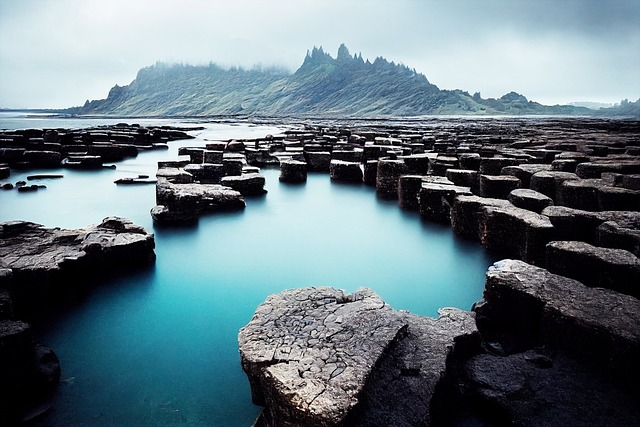
What is Ideal Trip Duration for Ireland Trip?
The ideal trip duration for visiting Ireland ranges from seven days to 7 to 10 days. This time frame allows travelers to explore the country's highlights without feeling rushed, from the iconic Cliffs of Moher to the vibrant streets of Dublin.
It provides ample time to immerse oneself in Ireland's rich history, culture, and natural beauty, as well as to venture off the beaten path and discover small country and hidden gems. Whether you're a first-time visitor or returning for another adventure, a week to ten days in Ireland promises a memorable experience filled with breathtaking landscapes, warm hospitality, and unforgettable moments.
Visiting Limerick? Here are Best Things to do in Limerick Ireland

1. First-Time Visitors (7 to 10 days)
For those experiencing Ireland for the first time, a trip duration of 7 to 10 days is ideal. This timeframe strikes a balance between exploring the country's must-see attractions and allowing for spontaneous discoveries along the way. It enables you to immerse yourself in Ireland's diverse offerings, see titanic museum, view from the majestic Cliffs of Moher to the bustling streets of Dublin. With ample time at your disposal, you can dive into the rich history, cultural heritage, and natural beauty that define the Irish experience.
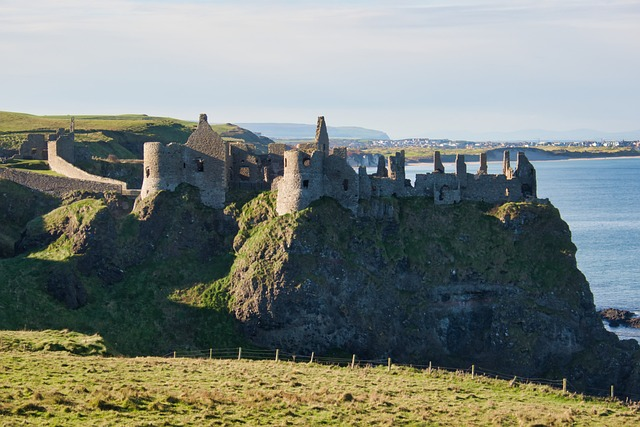
2. Family Trips (10 to 14 days)
Families traveling with children often benefit from a slightly longer stay of 10 to 14 days. This extended duration provides flexibility in scheduling family-friendly activities and allows for a more relaxed pace of exploration. From castle visits to outdoor adventures, storytelling sessions to cultural experiences, there's something to captivate every member of the family. Embrace the opportunity to create cherished memories together as you discover the magic of Ireland's landscapes and traditions.
Visiting Dublin? Here are Best Things To Do In Dublin Ireland: In Depth Guide for 2024
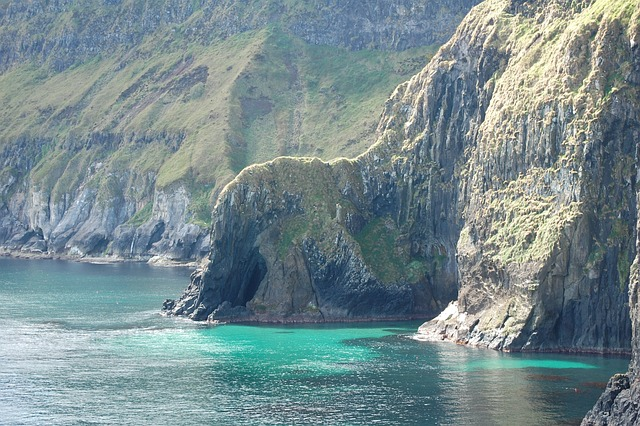
3. Short Getaways (3 to 5 days)
A short visit of 3 to 5 days may seem brief, but it's still possible to experience the essence of Ireland. Opt for a focused itinerary that highlights a specific region or theme, such as Dublin's urban charm or the rugged beauty of the Wild Atlantic Way. Despite the limited time, you can immerse yourself in Ireland's unique culture, savor its culinary delights, explore its historic sites, and soak in its breathtaking scenery.
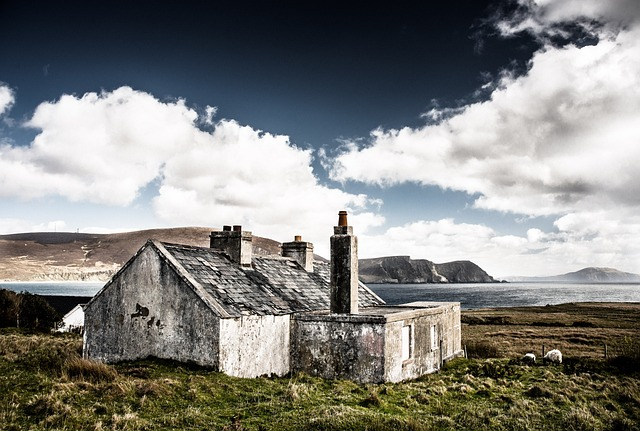
4. Weeklong Explorations (7 days)
With a week to spare, you can craft a well-rounded itinerary that encompasses both urban attractions and rural landscapes. Begin your journey in Dublin, where historical landmarks, vibrant neighborhoods, and cultural institutions await. Venture beyond the city limits to discover scenic wonders like the Cliffs of Moher, Connemara National Park, and the beautiful town of Westport. Embrace the freedom of the open road as you traverse Ireland's diverse terrain, soaking in its beauty at every turn.
Visiting cork? Here are Best Things to do in Cork Ireland: Awesome Places To Visit, Outdoor Activities to Do
5. Extended Adventures (10+ days)
For travelers with more than 10 days to spare, the possibilities are endless. Consider delving deeper into Ireland's lesser-known regions, uncovering hidden gems off the beaten path. Explore the rugged coastline of County Donegal, wander through the mystical landscapes of the Burren, or trace the footsteps of ancient civilizations at Newgrange and the Rock of Cashel. Allow yourself to be captivated by Ireland's timeless beauty as you go on an extended journey of discovery.

What Is the Ideal Length for a Family Trip To Ireland?
For families traveling with children, a slightly longer stay of 10 to 14 days is advisable. This provides ample time for family-friendly activities such as visiting castles, exploring national parks, enjoying outdoor adventures, and immersing in Irish folklore through storytelling sessions and cultural experiences.
Ample Time for Family-Friendly Activities
With a 10 to 14-day itinerary, families have the opportunity to partake in a wide array of family-friendly activities that cater to various interests and age groups. From visiting historic castles and exploring beautiful national parks to go on outdoor adventures and immersing in Irish folklore, there's something to captivate every member of the family.
Visiting Castles
Ireland is renowned for its majestic castles, each with its own fascinating history and architectural charm. Families can spend time exploring iconic castles such as Blarney Castle, with its legendary and famous Blarney Stone well, or Bunratty Castle, where medieval banquets bring history to life. Children can let their imaginations run wild as they roam the halls and grounds of these ancient fortresses, with amazing sights and creating memories that will last a lifetime.
Exploring National Parks
For families who enjoy outdoor adventures and breathtaking scenery, Ireland's national parks offer ample opportunities for exploration and discovery. Places like Killarney National Park have great reviews, with its tranquil lakes and lush forests, or Connemara National Park, with its rugged landscapes and diverse wildlife, provide the perfect backdrop for family adventures. Hiking, picnicking, and wildlife spotting are just a few of the activities families can enjoy amidst the natural beauty of Ireland's parks.
Outdoor Adventures
From coastal walks to cycling adventures, Ireland offers a wealth of outdoor activities that families can enjoy together. The Wild Atlantic Way, with its dramatic cliffs and panoramic views, provides endless opportunities for exploration along one of the world's most scenic coastal routes. Families can also try their hand at kayaking, surfing, or horseback riding, immersing themselves in the thrill of outdoor adventure against the backdrop of Ireland's stunning landscapes.
Immersing in Irish Folklore and Culture
One of the highlights of a family trip to Ireland is the chance to immerse oneself in the country's rich folklore and culture. From traditional music sessions to storytelling sessions, families can experience the magic of Irish culture firsthand. Visiting cultural attractions such as the Cliffs of Moher Visitor Centre or the EPIC Irish Emigration Museum offers insight into Ireland's history and heritage, providing both education and entertainment for visitors of all ages.
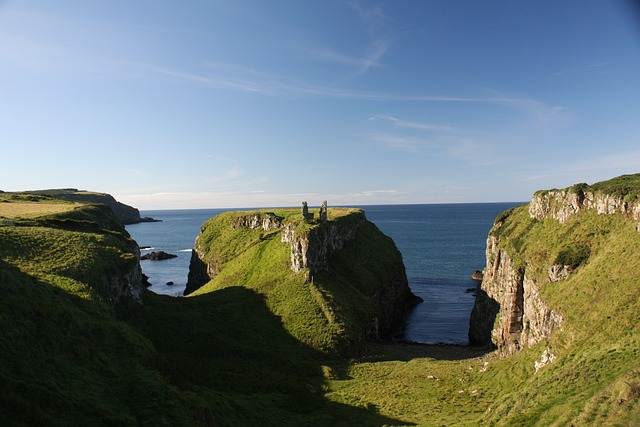
| Number of Days | Highlights | Recommended Activities |
|---|---|---|
| 3-5 Days | Dublin, Nearby Attractions |
|
| 7-10 Days | East and West Coast |
|
| 14 Days | Full Ireland Experience |
|
What Can You See in Ireland in 3 to 5 Days?
While a short visit of 3 to 5 days may make the entire trip seem brief, it's still possible to experience some of Ireland's highlights. Focus on a specific region such as Dublin and its surroundings or explore the Wild Atlantic Way along the west coast, including stops at iconic sites like the Giant's Causeway and the amazing villages of County Kerry.
1. Dublin and Surroundings
For travelers with limited time, exploring Ireland's vibrant capital city and its surroundings is an ideal choice. In Dublin, immerse yourself in the city's rich history, culture, and charm by visiting iconic landmarks such as:
-
Trinity College and the Book of Kells: Begin your journey with a visit to Trinity College, Ireland's oldest university, and marvel at the beautifully illuminated pages of the Book of Kells, a priceless medieval manuscript.
-
Guinness Storehouse: Discover the history and heritage of Ireland's most famous export at the Guinness Storehouse. Learn about the brewing process, enjoy panoramic views of the city from the Gravity Bar, and savor a pint of the "black stuff."
-
Dublin Castle: Step back in time as you explore Dublin Castle, a historic landmark that has played a central role in Ireland's history for over 800 years. Wander through the castle's elegant rooms, visit the State Apartments, and stroll through the beautiful Dubh Linn Gardens.
-
Temple Bar: Experience Dublin's vibrant nightlife and cultural scene in the lively Temple Bar district. From traditional pubs and live music venues to art galleries and street performers, there's always something happening in this bustling neighborhood.
2. Exploring the Wild Atlantic Way
Alternatively, travelers can choose to explore the rugged beauty of the Wild Atlantic Way along Ireland's west coast. Stretching over 2,500 kilometers, this scenic driving route offers breathtaking views, charming coastal villages, and iconic landmarks. Here are some highlights to include in a 3 to 5-day itinerary:
-
Cliffs of Moher: Marvel at the awe-inspiring beauty of the Cliffs of Moher, one of Ireland's most famous natural attractions. Towering 214 meters above the Atlantic Ocean, these dramatic cliffs offer panoramic views that are sure to take your breath away.
-
The Burren: Explore the otherworldly landscape of the Burren, a unique karst region characterized by its limestone pavements, underground caves, and rare flora. Take a guided walk through this fascinating terrain and discover its ancient archaeological sites and hidden treasures.
-
Galway City: Immerse yourself in the lively atmosphere of Galway City, known for its colorful streets, traditional music sessions, and vibrant arts scene. Stroll along the cobbled streets of the Latin Quarter, browse the stalls at the Galway Market, and sample local delicacies at the city's many restaurants and cafes.
-
Connemara National Park: Experience the wild beauty of Connemara National Park, where rugged mountains, pristine lakes, and vast bogs await exploration. Hike along scenic trails, spot native wildlife such as red deer and Connemara ponies, and admire panoramic views of the surrounding countryside.
3. Iconic Stops Along the Way
No matter which route you choose, be sure to include bucket list of some iconic stops along the way:
-
Giant's Causeway: Marvel at the natural wonder of the Giant's Causeway, an area of about 40,000 interlocking basalt columns formed by volcanic activity millions of years ago. Explore the unique rock formations, hear the legends of the giant Finn McCool, and soak in the breathtaking coastal scenery.
-
County Kerry: Discover the beauty of County Kerry, home to the stunning Ring of Kerry scenic drive. From quaint villages and rugged coastline to ancient archaeological sites and majestic mountains, County Kerry offers endless opportunities for exploration and adventure.
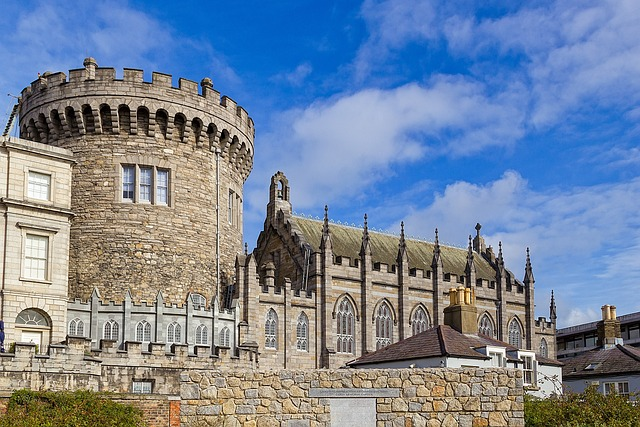
How to Make the Most of a 7-Day Itinerary in Ireland
With a week to spare, you can create a well-rounded itinerary covering both major city, urban and rural attractions. Spend a few days exploring Dublin's historical landmarks, vibrant neighborhoods, and cultural institutions before heading north and enjoying day trips to nearby attractions such as Glendalough and the Wicklow Mountains. Continue your journey westward along the Wild Atlantic Way, stopping at scenic spots like the Cliffs of Moher, Connemara National Park, and the charming town of Westport.
Exploring Dublin: Days 1-3
Go on an unforgettable exploration of Dublin, Ireland's dynamic capital city, known for its rich history and vibrant culture. Over the course of three days, immerse yourself in the city's historical landmarks, lush parks, and nearby natural wonders, experiencing the best that Dublin has to offer.
Day 1: Arrival in Dublin
Begin your Irish adventure by arriving in Dublin, the vibrant capital city known for its rich history, lively culture, and friendly locals. After checking into your accommodation, take some time to explore the city center on foot, soaking in the atmosphere of bustling streets, historic buildings, and charming parks.
Day 2: Dublin's Historical Landmarks
Dedicate your second day to exploring Dublin's wealth of historical landmarks and cultural institutions. Start with a visit to Trinity College, Ireland's oldest university, to marvel at the beautifully illuminated pages of the Book of Kells. Next, learn about the city's medieval past with a tour of Dublin and medieval Castle itself, followed by a stroll through the amazing grounds of St. Stephen's Green.
Day 3: Day Trips from Dublin
Venture beyond the city limits on day three with day trips to nearby attractions such as Glendalough and the Wicklow Mountains. Just a short drive from Dublin, Glendalough is renowned for its stunning scenery, ancient monastic site, and scenic walking trails. After exploring the tranquil beauty of Glendalough, continue your journey through the Wicklow Mountains, stopping at villages and scenic viewpoints along the way.
Journey along the Wild Atlantic Way: Days 4-7
Get on an exhilarating journey along Ireland's renowned Wild Atlantic Way, a scenic coastal route showcasing the country's rugged beauty. Over four captivating days, explore iconic landmarks like the Cliffs of Moher, delve into the unique landscapes of the Burren and Connemara, and experience the vibrant culture of Galway.
Day 4: Departure for the Wild Atlantic Way
On day four, depart Dublin and begin your journey westward along the Wild Atlantic Way, one of the world's most scenic coastal routes. As you travel through the rugged landscapes of Ireland's west coast, be prepared to be captivated by breathtaking views, charming villages, and hidden gems waiting to be discovered.
Day 5: Cliffs of Moher and the Burren
Make your way to the Cliffs of Moher on day five, one of Ireland's most iconic natural attractions. Marvel at the sheer cliffs rising dramatically from the Atlantic Ocean, offering panoramic views that stretch for miles. After exploring the cliffs, take time to visit the nearby Burren, a unique karst landscape renowned for its rare flora and ancient archaeological sites.
Day 6: Connemara National Park and Galway
Continue your journey along the Wild Atlantic Way on day six with a visit to Connemara National Park. Explore the park's rugged mountains, pristine lakes, and scenic walking trails, and be sure to keep an eye out for native wildlife such as Connemara ponies and red deer. Afterward, make your way to the vibrant city of Galway, known for its colorful streets, lively music scene, and friendly atmosphere.
Day 7: Westport and Departure
On your final day in Ireland, explore the charming seaside town of of Westport, nestled between the Atlantic Ocean and the majestic Croagh Patrick mountain. Take a leisurely stroll along the town's streets, visit historic landmarks such as Westport House, and savor a meal at one of the town's cozy pubs or restaurants. After bidding farewell to the beauty of Ireland's west coast, depart for your onward journey with memories to last a lifetime.
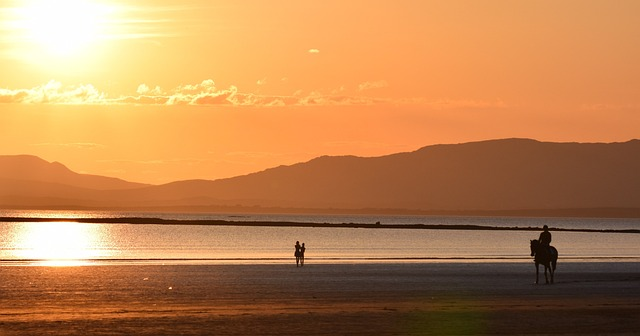
What Things to Do On a 10+ Days Trip to Ireland?
For travelers with more than 10 days to spare, the possibilities are endless. Consider venturing off the beaten path to discover hidden gems, quaint villages, and scenic landscapes. Explore lesser-known regions such as the rugged beauty of County Donegal or the serene landscapes of County Clare's Burren region. Dig deeper into Ireland's history and heritage by visiting ancient sites like Newgrange and the Rock of Cashel, or indulge on a culinary journey sampling local delicacies and traditional Irish cuisine.
1. Explore Lesser-Known Regions
Journey off the beaten path as you head south to explore the lesser-known regions of Ireland. From the rugged beauty of County Donegal in the northwest to the unique landscapes of County Clare's Burren region in the south, discover hidden gems and untamed wilderness in these captivating destinations.
County Donegal
Located in the rugged northwest of Ireland, County Donegal is renowned for its untamed beauty and rugged landscapes. Spend a few days exploring the dramatic coastline, villages, and remote islands that dot the region. Highlights include the stunning Slieve League Cliffs, one of the highest sea cliffs in Europe, and the idyllic beaches of Donegal's Wild Atlantic Way.
County Clare's Burren Region
Venture south to County Clare and discover the unique landscapes of the Burren region. This limestone plateau is home to a wealth of natural wonders, including ancient archaeological sites, rare flora, and hidden caves. Explore the lunar-like terrain on foot, following scenic walking trails that lead through this fascinating landscape of rocky outcrops rolling hills and hidden valleys.
2. Dig Deeper into Ireland's History and Heritage
Immerse yourself in Ireland's rich history and heritage with visits to ancient sites such as Newgrange and the Rock of Cashel. Located in County Meath, Newgrange is a UNESCO World Heritage Site dating back over 5,000 years, making it older than Stonehenge and the Great Pyramids of Egypt. Explore the mysterious passage tomb and marvel at the intricate Neolithic carvings that adorn its walls. Meanwhile, the Rock of Cashel in County Tipperary offers a glimpse into Ireland's medieval past, with its impressive collection of ancient ruins, including a round tower, cathedral, and high crosses.
3. Indulge in a Culinary Journey
No trip to Ireland would be complete without indulging in the country's culinary delights. From hearty stews and freshly caught seafood to artisan cheeses and creamy pints of Guinness, Ireland offers a tantalizing array of flavors and dishes to tempt your taste buds. Indulge in a culinary journey through the country, sampling local delicacies at farmers' markets, seafood shacks, and traditional pubs. Don't miss the chance to experience a traditional Irish meal, complete with hearty fare, lively music, and warm hospitality.
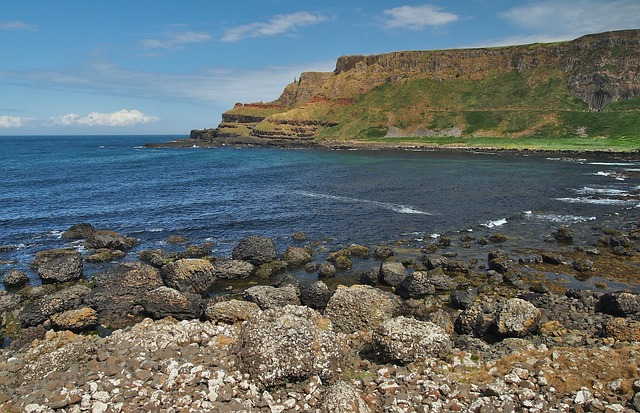
How Many Days for a Comprehensive Road Ireland Trip?
A comprehensive road trip across Ireland's diverse landscapes typically requires a minimum of two weeks or more. This allows you to meander along scenic routes, explore off-the-beaten-path destinations, and immerse yourself in the charm of Ireland's countryside. Consider driving the entirety of the Wild Atlantic Way or going on day trip along the epic Causeway Coastal Route, stopping at quaint villages, historic landmarks, and natural wonders along the way.
How Does Your Interest Affect Ireland Trip Length?
Your specific interests can greatly influence the duration of your Ireland trip. For history buffs, extra time may be needed to explore ancient ruins, medieval castles, and museums. Nature enthusiasts may prefer a longer stay to hike through national parks, explore coastal trails, and experience outdoor adventures such as kayaking and surfing. Food and drink aficionados might extend their trip to savor the flavors of Irish cuisine, visit distilleries and breweries, and participate in culinary tours and tastings.
How Does the Season Affect the Ideal Length of Stay?
The season of your visit to Ireland can significantly influence the ideal length of your stay, as each season offers unique experiences and attractions. Whether you're drawn to the vibrant colors of spring, the long sunny days of summer, the crisp air of autumn, or the cozy ambiance of winter, Ireland has something to offer visitors year-round. Let's explore how the different seasons impact the ideal length of stay in Ireland.
Experience the vibrant spirit of Ireland's summer season, with its longer days and bustling atmosphere. From music festivals to scenic landscapes, immerse yourself in the country's delights during a recommended stay of 7 to 10 days. Discover the best of Ireland's culture, history, and natural beauty in summertime.
Summer
During the summer months, a minimum stay of 7 to 10 days is recommended to fully experience all that Ireland has to offer. This duration allows you to explore the country's diverse attractions, from historic landmarks and scenic landscapes to charming villages and lively cities. Whether you're hiking along coastal trails, exploring ancient ruins, or enjoying a pint of Guinness in a traditional pub, a week-long stay in Ireland in summer ensures you don't miss out on any of the season's highlights.
Summer is peak tourist season in Ireland, with longer days, warmer temperatures, and a lively atmosphere. The countryside is alive with activity, from music festivals and outdoor events to bustling markets and lively pubs. With so much to see and do, visitors often choose to extend their stay to fully immerse themselves in the summer delights of Ireland.
Autumn
In autumn, a stay of 5 to 7 days allows visitors to experience the changing colors of the Irish countryside and immerse themselves in the season's cultural and culinary delights. This duration provides enough time to explore the scenic landscapes, visit historic sites, and sample seasonal delicacies such as hearty stews, freshly baked bread, and artisanal cheeses. Whether you're admiring the fall foliage in County Wicklow or exploring the quaint villages of County Cork, a week-long stay in Ireland in autumn promises a memorable and enchanting experience.
Autumn brings a change in the air as the temperatures begin to cool and the leaves turn vibrant shades of red, orange, and gold. The countryside takes on a magical quality, making it an ideal time for scenic drives, leaf-peeping, and outdoor adventures. From exploring ancient forests to attending harvest festivals, autumn offers a wealth of opportunities to experience the beauty of Ireland in a more relaxed and intimate setting.
Winter
During the winter months, a stay of 3 to 5 days is recommended for visitors looking to experience the magic of Ireland in the off-season. This duration allows you to enjoy the festive atmosphere of Dublin's Christmas markets, explore historic landmarks adorned with twinkling lights, and cozy up in traditional pubs with a hot toddy or Irish coffee. Whether you're admiring the winter scenery along the Ring of Kerry or taking a scenic drive through the Wicklow Mountains, a short stay in Ireland in winter promises a cozy and memorable experience.
Winter in Ireland is a time of cozy fires, warm hospitality, and festive cheer. While the weather may be cooler and the days shorter, winter offers its own unique charms, from Christmas markets and holiday festivities to quiet walks along deserted beaches. With fewer crowds and lower prices, winter can be an ideal time to explore Ireland's historic sites, cultural attractions, and scenic landscapes at a leisurely pace.
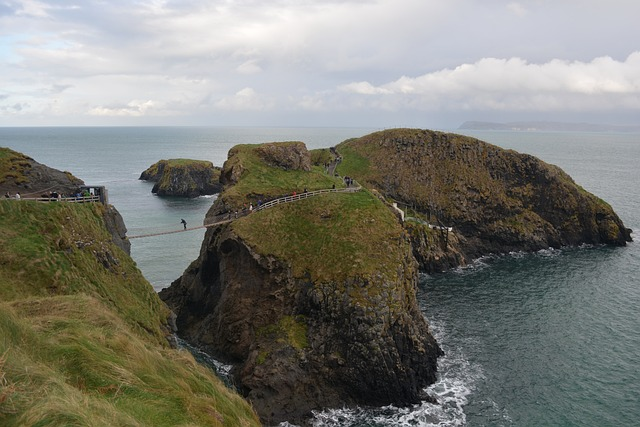
What Are the Benefits of Visiting Ireland in the Spring?
Visiting Ireland in the spring, from March to May, offers a plethora of benefits that make it an ideal time to experience the Emerald Isle in all its glory. From blooming landscapes to milder temperatures and fewer crowds, spring provides a perfect backdrop for exploring Ireland's natural beauty and cultural treasures.
Blooming Landscapes
As the winter chill fades away and the days grow longer, Ireland bursts into life with an explosion of color. Spring brings a riot of blooming flowers, lush green fields, and budding trees, transforming the countryside into a beautiful paradise. From vibrant wildflowers carpeting the meadows to delicate cherry blossoms adorning the streets, the landscape becomes a feast for the eyes, offering endless opportunities for scenic walks, photography, and relaxation amidst nature's splendor.
Milder Temperatures
Spring heralds the arrival of milder temperatures in Ireland, making it a comfortable time to explore the outdoors without the extremes of heat or cold. Daytime temperatures typically range from 10°C to 15°C (50°F to 59°F), offering pleasant conditions for hiking, cycling, and sightseeing. The cool, crisp air invigorates the senses, while the occasional sunny days provide the perfect excuse to soak up the warmth and enjoy alfresco dining or picnics in the park.
Fewer Crowds
Compared to the peak tourist season in summer, spring sees fewer crowds in Ireland, allowing visitors to enjoy a more relaxed and authentic experience. Popular attractions, such as the Cliffs of Moher and Dublin's cultural landmarks, are less crowded, making it easier to explore at your own pace and fully appreciate their beauty and significance. Whether you're wandering through historic sites, browsing local markets, or enjoying a pint in a cozy local pub, you'll find that spring offers a quieter and more intimate atmosphere to connect with the heart and soul of Ireland.
Ideal for Outdoor Activities
With longer daylight hours and milder temperatures, spring is the perfect time for outdoor activities in Ireland. Hiking enthusiasts can lace up their boots and hit the trails, exploring scenic routes such as the Wicklow Way or the Causeway Coast Path. Cycling enthusiasts can pedal along coastal roads, through villages, and past rolling green hills, soaking in the breathtaking scenery at every turn. Birdwatchers can flock to nature reserves and coastal cliffs to spot migratory birds returning for the season, while garden lovers can wander through botanical gardens and country estates bursting with spring blooms.
Maximized Sightseeing Opportunities
With the longer daylight hours of spring, visitors can maximize their sightseeing opportunities and make the most of their time exploring Ireland's attractions. Whether you're admiring the architectural splendor of Dublin's Georgian squares, exploring ancient ruins such as the Rock of Cashel or Newgrange, or going on a scenic drive along the Wild Atlantic Way, you'll have ample daylight to see and do it all. Spring's extended daylight hours mean more time to discover hidden gems, soak up the atmosphere of charming towns and villages, and create lasting memories against the backdrop of Ireland's stunning landscapes.
How Long Should You Stay During the Summer Months In Ireland?
A minimum of 7 to 10 days is recommended to fully experience the country's summer delights, including outdoor festivals, music events, and coastal adventures. Summer (June to August) is peak tourist season in Ireland, with longer days, festivals, and a lively atmosphere. However, be prepared for higher accommodation prices and larger crowds at popular attractions.
FAQs On How Many Days in Ireland are Enough?
Can I visit Ireland in less than a week?
While it's possible to visit Ireland in less than a week, a longer stay is recommended to fully experience the country's diverse attractions and landscapes. If time is limited, focus on a specific region or itinerary to make the most of your visit.
Is it worth renting a car for an Ireland trip?
Renting a car is highly recommended for exploring Ireland, especially if you plan to venture into rural areas and off-the-beaten-path destinations. Having a rental car also provides flexibility and allows you to explore popular destination at your own pace.
What are some must-see attractions in Ireland?
Some must-see attractions in Ireland include the Cliffs of Moher, Ring of Kerry, Dublin's Trinity College and Book of Kells, Giant's Causeway, Blarney Castle, and the Dingle Peninsula, among others.
What is the Best Time of Year to Visit Ireland?
The best time of year to visit Ireland depends on your preferences and interests. Summer (June to August) offers long days, festivals, and outdoor activities, but it's also the busiest tourist season. Spring (March to May) and autumn (September to November) are ideal for mild weather, fewer crowds, and blooming landscapes. Winter (December to February) brings cozy atmospheres, festive markets, and lower prices, but shorter daylight hours and cooler temperatures. Ultimately, the best time to visit Ireland depends on what you hope to experience during your trip.
Do I Need a Visa to Visit Ireland?
Citizens of many countries, including the United States, Canada, Australia, and the European Union member states, do not need a visa to visit Ireland for tourism purposes for stays of up to 90 days. However, visa requirements vary depending on your nationality, the purpose of your visit, and the duration of your stay. It's important to check the visa requirements well in advance of your trip to ensure compliance with immigration regulations.
